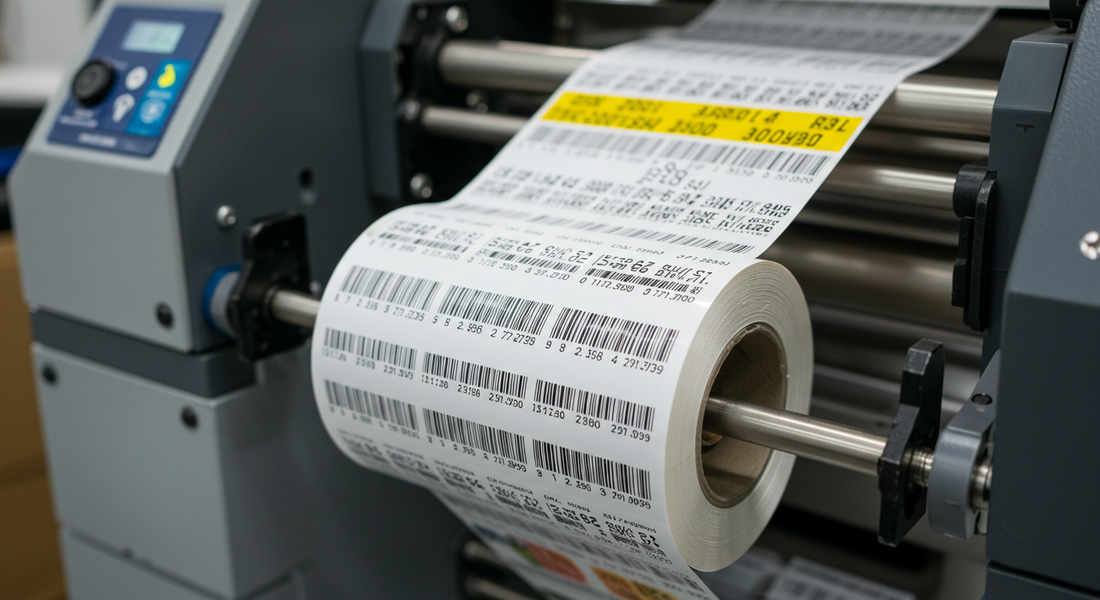
How to Print Thermal Transfer Labels Like a Pro
If you’ve ever fumbled through a roll of thermal transfer labels, wondered which side to feed in, or accidentally used the wrong ribbon (yes, it happens), don’t worry; it is totally fine. Printing thermal transfer labels might seem like a techy task, but once you get the hang of it, it’s surprisingly smooth.
Let’s walk through how to print thermal transfer labels;

First, What Is Thermal Transfer Printing?
Quick refresher: Thermal transfer printing uses a ribbon and heat to transfer ink onto a label. Unlike direct thermal labels (which darken when heated and don’t need a ribbon), thermal transfer labels are more durable, resistant to heat and light, and built for longevity.
They’re ideal for:
-
Product labels
-
Barcodes
-
Warehouse inventory
-
Outdoor-use labels
-
Long-term storage
Now let’s dive into how to make the most of them.
Step 1: Set Up Your Printer
This is where many people get tripped up—printer setup. But don’t worry, it’s easier than assembling IKEA furniture.
Here’s what you do:
-
Load the ribbon: Make sure the shiny side of the ribbon is facing the label. That’s the inked side.
-
Insert the labels: Line up your thermal transfer labels neatly in the tray or roll holder. Make sure the sensor can detect them (for fanfold, alignment matters even more).
-
Adjust the guides: Make sure the labels feed straight to avoid wonky prints.
-
Select the right mode: Double-check your printer settings are set to thermal transfer and not direct thermal. Yes, that little setting can make or break your whole printing job.
Step 2: Design Your Label
You don’t need to be a graphic designer to create a label that gets the job done.
Keep these in mind:
-
Use bold fonts for barcodes to ensure scan-ability.
-
Stick to high contrast colors (like black on white) for readability.
-
Leave some white space so nothing looks crammed.
-
If using software (like BarTender, ZebraDesigner, or even your printer’s native program), make sure it's set to match your label size—4" x 6" is a fan-favorite for shipping.
Step 3: Do a Test Print
Think of this like a dress rehearsal.
-
Print one label first.
-
Check alignment, clarity, and contrast.
-
If it’s blurry or smudged, it could be:
-
The ribbon isn’t loaded right.
-
The print speed is too fast.
-
The darkness setting is too low.
-
Make tiny adjustments until it’s just right. Trust us—this little step saves a lot of wasted labels down the line.
Step 4: Clean and Maintain Your Printer
Even label pros need to do routine check-ups. Every 3–5 rolls, take a moment to:
-
Clean the printhead with isopropyl alcohol (on a lint-free cloth).
-
Wipe off any dust or label residue from the rollers.
-
Check for worn-out parts, especially if you print in bulk.
Clean gear = crisp prints every time.
Bonus Tips for Pro-Level Prints
Here’s where the pros really shine:
-
Label type matters: Use coated thermal transfer labels for better print quality and durability.
-
Choose the right ribbon: Wax ribbons are great for paper labels. Wax/resin or resin ribbons are best for synthetic, more durable labels.
-
Storage counts: Keep labels and ribbons in a cool, dry spot. Too much heat or humidity can ruin print quality before you even load them up.
Final Thoughts
With the steps above, you’ll not only avoid the common pitfalls but also look like an absolute label legend in your workspace.
And if you’re in the market for quality thermal transfer labels (or the printers and ribbons to go with them), we’ve got you covered.
